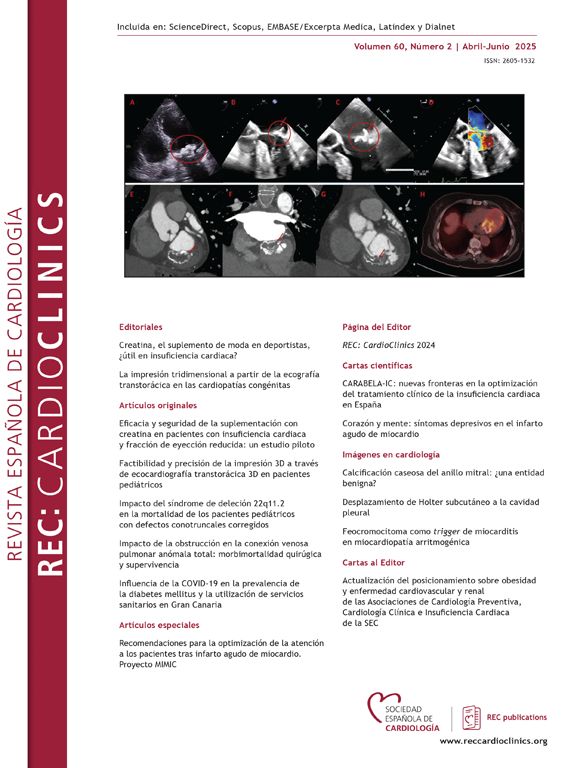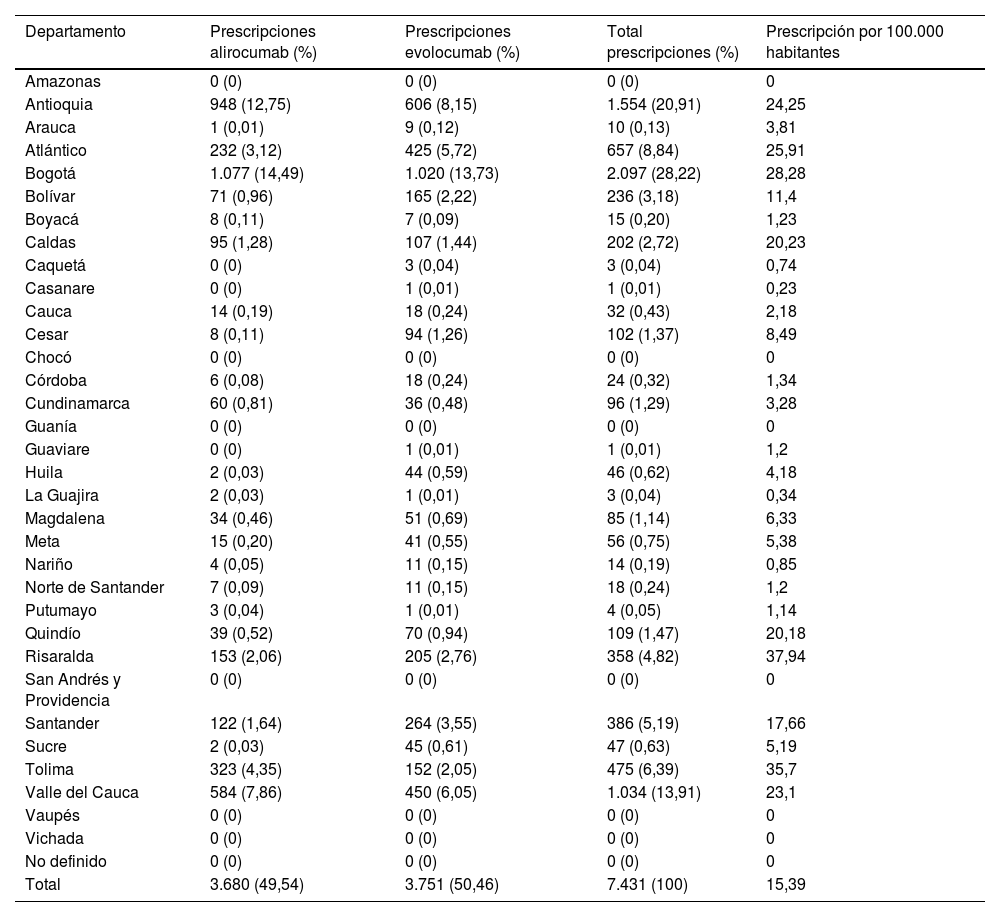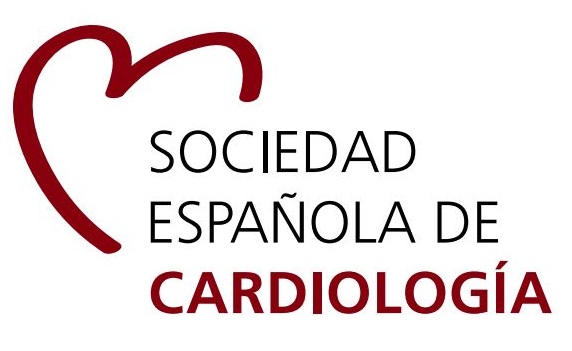Los inhibidores de la proproteína convertasa subtilisina/kexina tipo9 (iPCSK9) reducen eficazmente el colesterol ligado a lipoproteínas de baja densidad y han demostrado disminuir la morbimortalidad cardiovascular en pacientes de alto riesgo. Sin embargo, su costo dificulta su acceso real. Este estudio busca describir las variables relacionadas con la prescripción de iPCSK9 en Colombia.
MétodosAnálisis poblacional de las prescripciones de iPCSK9 en Colombia durante 2019-2021, basado en datos provenientes de la base de datos gubernamental Sistema Integrado de Información de la Protección Social. Se extrajo información sobre sexo, grupos de edad, área geográfica (departamento), régimen de salud, código CIE-10 y perfil profesional del prescriptor.
ResultadosSe emitieron 7.431 prescripciones: 49,5% de alirocumab y 50,5% de evolocumab. La mayoría de los pacientes eran varones >50años. La formulación del régimen contributivo fue mayor, con una razón de tasa de prescripción de 6,59 (IC95%, 6,147-7,073; p<0,01). Las áreas más pobladas tuvieron la mayor formulación, mientras que 6 departamentos no registraron prescripciones. Las indicaciones más comunes fueron la dislipemia y la cardiopatía isquémica, y los principales prescriptores fueron los cardiólogos e internistas.
ConclusionesLa formulación de iPCSK9 fue menor de la esperada. Hubo más formulaciones en varones y personas >50años, datos compatibles con la mayor incidencia de enfermedades cardiovasculares en este grupo poblacional. Las regiones con mayor densidad poblacional tuvieron más formulaciones, y algunas áreas, principalmente rurales, no tienen penetrancia. Las marcadas diferencias de acceso entre regiones y regímenes requieren más análisis para identificar posibles barreras de acceso.
Proprotein convertase subtilisin/kexin type9 convertase inhibitors (iPCSK9) effectively reduce low-density lipoprotein cholesterol and have been shown to decrease cardiovascular morbidity and mortality in high-risk patients. However, their cost hinders their real accessibility. This study seeks to describe variables related to iPCSK9 prescription in Colombia.
MethodsPopulation-based analysis of iPCSK9 prescriptions in Colombia during the years 2019-2021, based on data from the government database Sistema Integrado de Información de la Protección Social. Information was extracted on sex, age groups, geographical area (department), health regime, ICD-10 code and the professional profile of the prescriber.
ResultsThere were 7431 prescriptions, 49.5% for alirocumab and 50.5% for evolocumab. Most patients were men >50years old. The contributory regimen formulation was higher with a prescription rate ratio of 6.59 (95%CI, 6.147-7.073, P<.01). The most populated areas had the highest prescribing, while six departments had no prescriptions. The most common indications were dyslipidaemia and ischaemic heart disease, with cardiologists and internists being the main prescribers.
ConclusionsFormulation of iPCSK9 was lower than expected. There were more formulations in men and people >50years, data compatible with the higher incidence of cardiovascular disease in this population group. Regions with higher population density had more formulations and some areas, mainly rural, have no penetration. The marked differences in access between regions and regimens require further analysis to identify possible barriers to access.
Article
Use datos de acceso a SEC en el menú Acceder.
Si es socio de la Sociedad Española de Cardiología y no puede acceder con sus claves, escriba a rec@cardioclinics.org.
Use the Society's website login and password here.
If you are member of SEC and you have some problems with your login data, please contact with rec@cardioclinics.org.












